Understanding Marketing Attribution: A Complete Guide
Do you want to know which of your ad campaigns are truly landing new players and which ones are simply burning your budget? In mobile gaming, every ad dollar must count. You need precise, reliable insight into which creatives and channels deliver real installs. Here is where marketing attribution comes.
Marketing attribution provides clarity by tracing each user’s journey from the first tap to the install. It helps you understand what’s working, what’s not, and where to shift your spending. Without it, you're optimizing blind and risking wasted spend on underperforming channels.
So, are you also dealing with these frustrations? Spending money on campaigns that don’t convert? This guide is built for you. You'll learn what marketing attribution is, different signs that show you need an attribution model, how it works, and various attribution models. By the end, you’ll have a clear playbook to identify which ads bring in players and how to invest to acquire more players.
What Is Marketing Attribution?
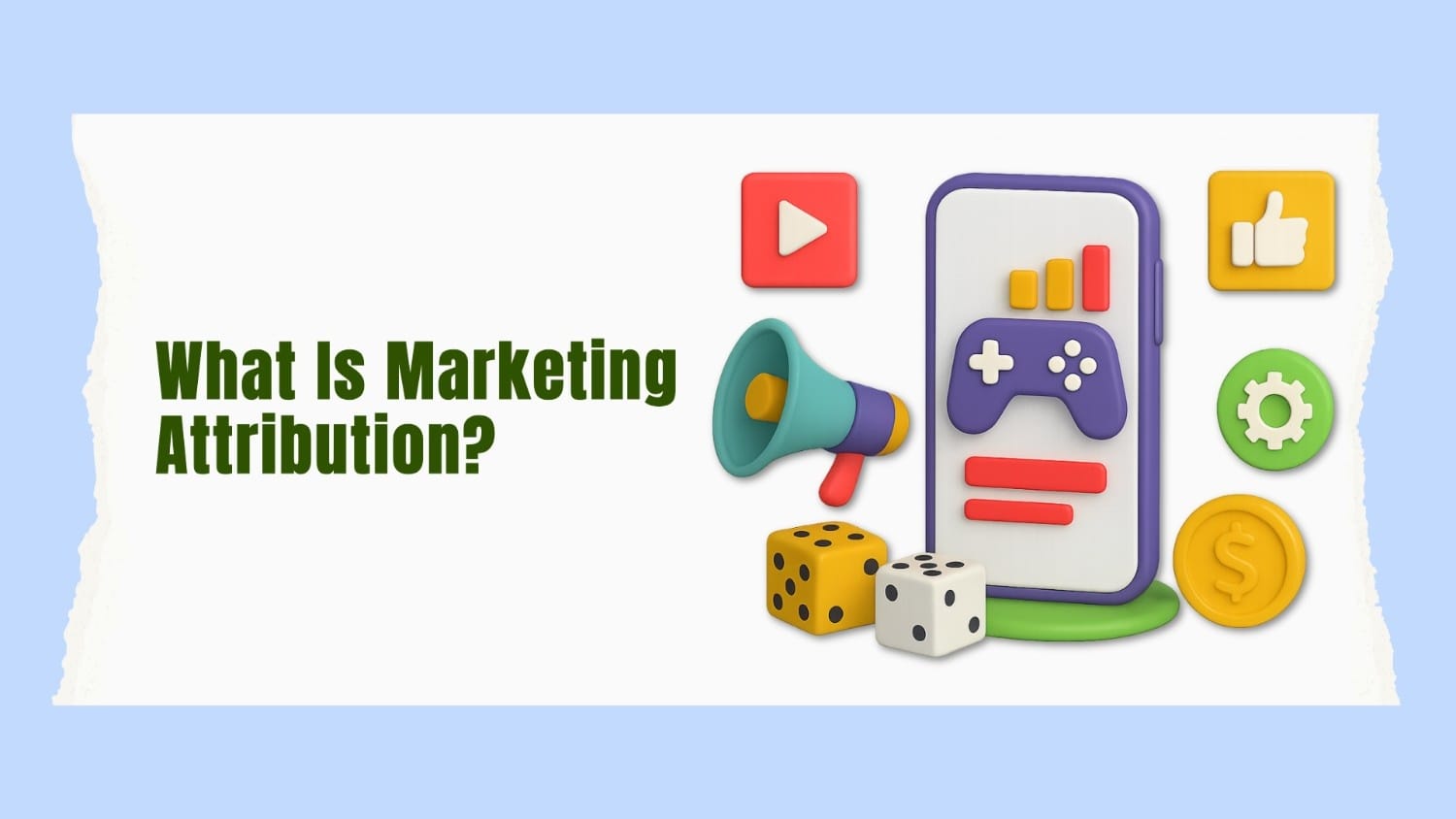
Marketing attribution is the process of identifying and assigning credit to all the touchpoints that contribute to a user installing your game. In mobile gaming, these touchpoints could include seeing your Facebook video ad, clicking on an Instagram story, or interacting with a playable teaser. Attribution connects each of these interactions to the eventual installation, so you know exactly which ads and channels are bringing in real players.
The goal of marketing attribution is to provide you with actionable insights into your user acquisition strategy. It shows you which channels and creatives are delivering real installs so you can double down on what works and stop funding what doesn’t.
Why Attribution Matters?
Optimizing Spend: By pinpointing which ad channels truly drive installs, you can double down on top performers and trim or stop underperformers. This leads to a more efficient and effective ad spend allocation.
Improving Campaigns: Attribution gives you a data-driven view of what works. When you know which aspects of your campaigns resonate with players (e.g., a particular video ad or playable format), you can continually refine messaging, design, and placement to attract even more users.
Enhancing User Insights: Understanding the full player journey lets you see how prospects discover your game. Multi-touch models offer a layered picture of influence rather than just crediting the last click.
Supporting Growth: When you know which channels and creatives consistently convert new users, you can confidently scale those elements. Attribution gives you the evidence you need to expand budgets strategically and grow your player base without overspending.
Now that you understand what marketing attribution is, let’s look at when it becomes essential.
Signs You Need an Attribution Model
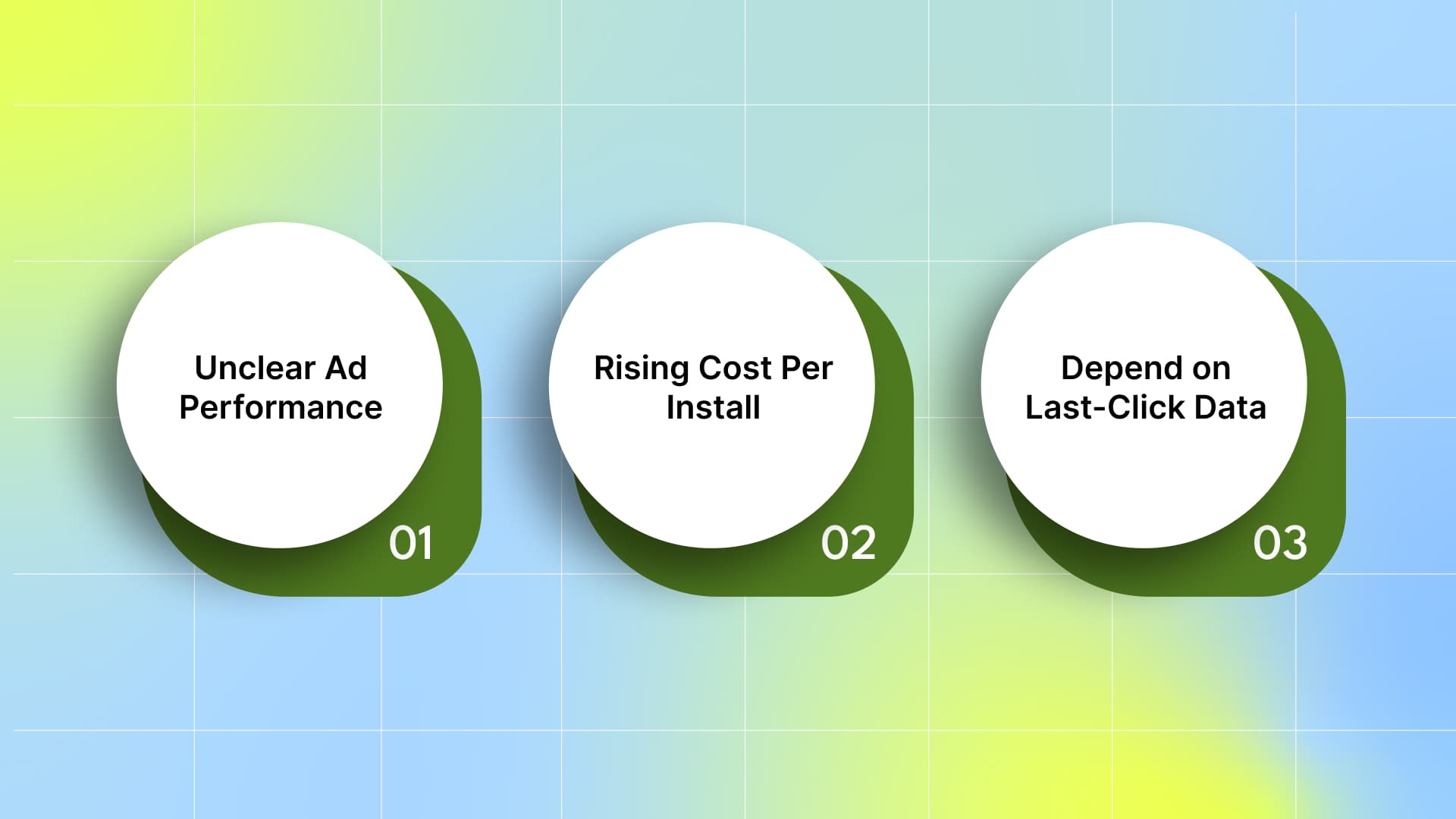
If you're struggling to understand the effectiveness of your marketing efforts or optimize your user acquisition strategy, an attribution model is crucial. Here are the top 3 signs that indicate you need one:
Unclear Ad Performance: You’re running ads across different platforms, but you’re not sure which ones are working. Without proper tracking, every new install feels random. You’re spending money, but you don’t know where it’s going or what’s paying off.
Rising Cost Per Install (CPI): You’re noticing that you’re paying more to get each new player, but there’s no clear reason behind it. Without an attribution model, you can’t see which ads are wasting your budget. You need a clearer view before things get more expensive.
Depend on Last-Click Data: If you only credit the last ad a player clicked before installing, you’re missing the whole picture. Players often see multiple ads before they finally install your game. Attribution helps you understand all the touchpoints that led them to decide to install your game.
Once you recognize the signs, the next step is understanding how attribution actually works.
How Attribution Works
When scaling your mobile game, knowing where your new players are coming from is crucial. Attribution connects the dots between your ads and actual installs. Here’s how it works:
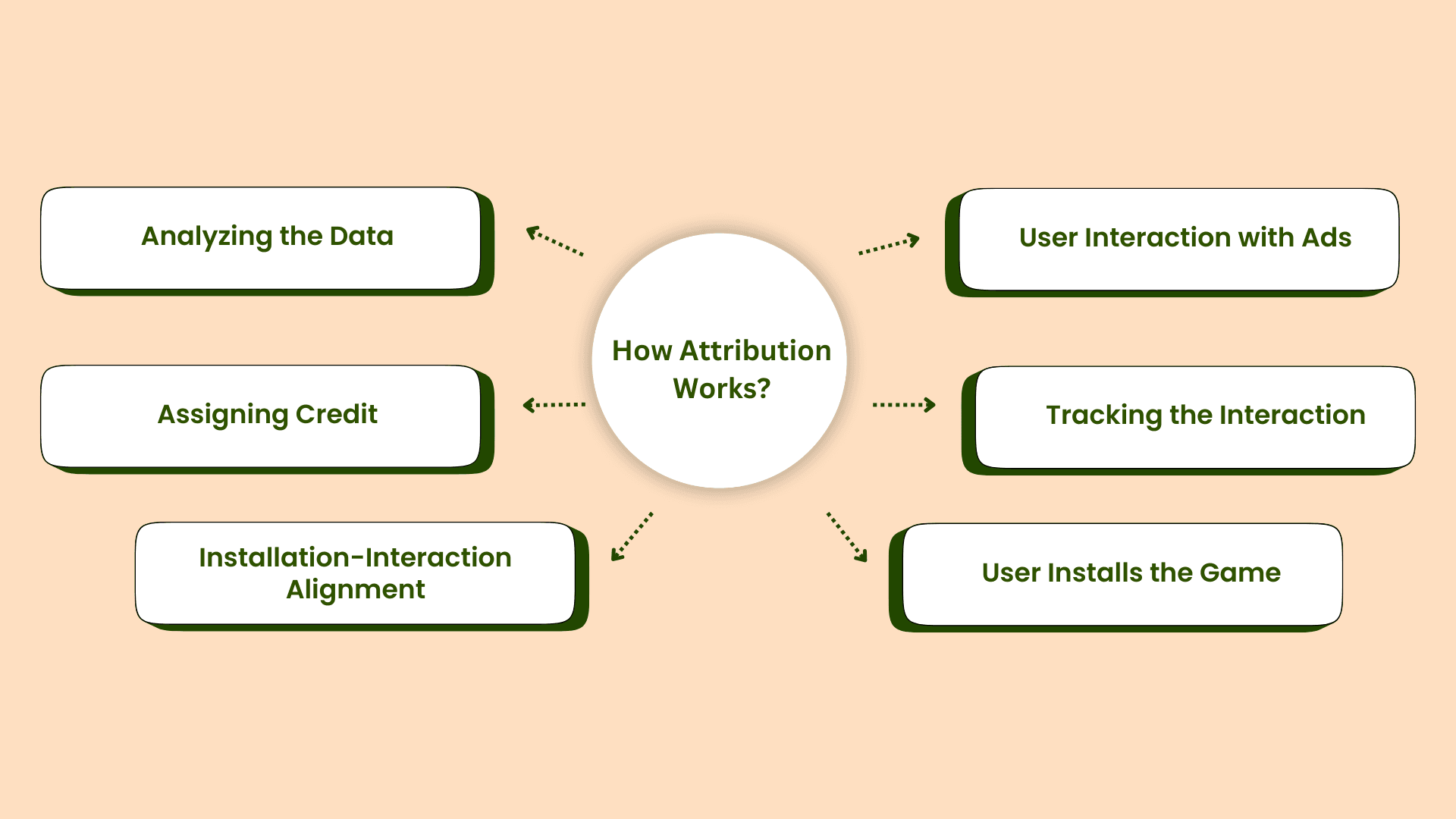
1. User Interaction with Ads
It starts when a potential player sees and interacts with your ad. This could be a banner ad, a video view, or a playable ad engagement. These interactions happen across platforms like Facebook, Google, or TikTok. Each of these touchpoints marks the beginning of the user acquisition journey.
2. Tracking the Interaction
Once the ad is clicked or viewed, a Mobile Measurement Partner (MMP), such as Adjust or AppsFlyer, steps in. The MMP SDK logs the user’s advertising ID (IDFA/GAID), OS version, geolocation fingerprinting (when permitted), and timestamp, ensuring high-fidelity match rates under ATT and privacy frameworks.
3. User Installs the Game
After the ad interaction, the player might install your game immediately or after some time. The MMP detects this install event through its SDK integrated into your app. It identifies when the user first opens the game, which marks a successful acquisition.
4. Matching the Installation to the Interaction
Now comes the attribution part. The MMP tries to match the install with the earlier ad interaction using identifiers like advertising IDs or referrer tags. If the match is successful, the system knows exactly which ad brought the player in.
5. Assigning Credit
The installation is then credited to the right ad or channel. This depends on the attribution model you're using:
First-click gives credit to the earliest interaction.
Last-click credits the most recent ad before installation.
Multi-touch shares credit across several interactions.
Choosing the right model helps you understand the whole user journey.
6. Analyzing the Data
Once everything’s tracked and matched, you can finally see what’s working. The MMP provides dashboards that show which ads and platforms drive the most installs. With this insight, you can stop wasting money on underperforming sources and double down on what actually brings in quality players.
Now that you understand how attribution works, let’s explore the key models used in mobile game user acquisition.
Key Attribution Models for Mobile Game User Acquisition
Understanding different attribution models helps you map how players discover and install your game. Here's a breakdown of the key models to guide smarter user acquisition decisions:
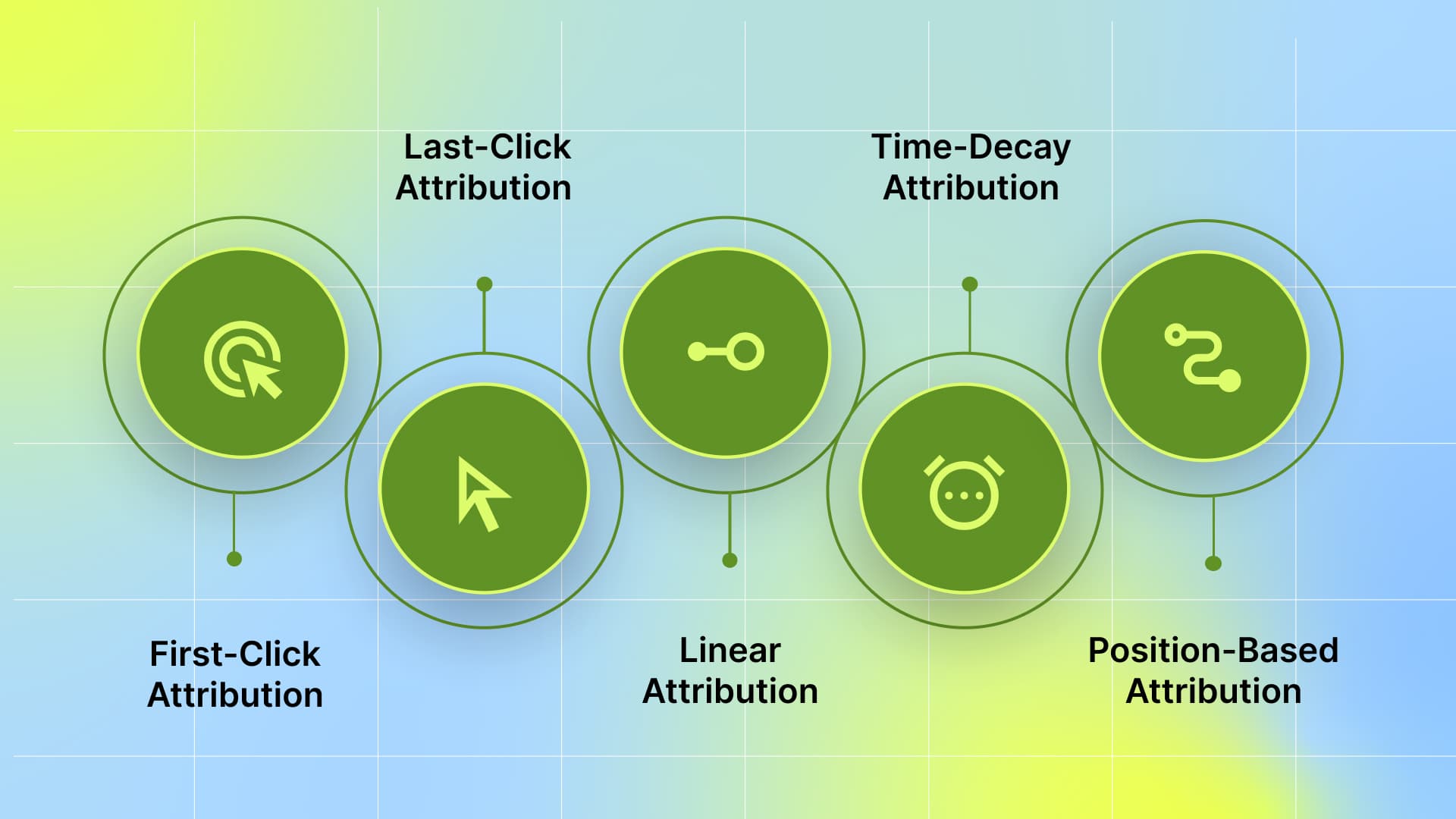
1. First-Click Attribution
Credits the very first ad interaction that sparked a player’s journey to your game. It identifies which channel drove initial awareness, helping you understand where players first discover you. This model highlights the top‑of‑funnel drivers that generate interest.
Pros
Shows which channel sparks first interest.
Easy to set up and understand.
Ideal if your goal is building awareness.
Cons
Ignores any later ads that helped convert.
Overvalues top‑of‑funnel campaigns.
May misallocate the budget by undervaluing nurtured touchpoints.
Why choose First‑Click: Use this model when your goal is to identify and scale the channels that build awareness and attract new players to your game.
2. Last-Click Attribution
Gives full credit to the final ad interaction before a player installs your game. It reveals which channel “closed” the conversion, showing you what really drives the installation. This model focuses on the bottom-of-funnel impact.
Pros
Clearly shows which ads directly lead to installs.
Easy to set up, many platforms default to last‑click.
Highlights high‑performing closing creatives and networks.
Cons
Overlooks how earlier ads influenced the installation.
Ignores top-of-funnel assist.
Risks of over-investing in late‑stage touchpoints only.
Why choose Last‑Click: Pick this when you want to optimize for the final step that convinces players to hit “Install” and measure direct conversion efficiency.
3. Linear Attribution
Distributes credit equally across every ad interaction in a player’s path. It ensures that each touchpoint, from the first impression to the final click, gets recognized. This balanced approach helps you see the cumulative impact of all your ads.
Pros
Acknowledges every touchpoint in the journey.
Prevents bias toward only first or last interactions.
Simplifies budget allocation across channels.
Cons
Treats all touchpoints as equally valuable, even minor ones.
Doesn’t highlight which ads are most influential.
It may dilute insights into top performers.
Why choose Linear: Opt for linear attribution when you want a fair, straightforward view of how all your ads collectively drive new installs.
4. Time-Decay Attribution
Gives more credit to ads that run just before the installation. Recognizes that recent ads are often more persuasive. You track which interactions helped close the installation.
Pros
Emphasizes touchpoints that most directly drive installs.
Reflects the natural recency effect in user decisions.
Helps optimize for ads that trigger the installation.
Cons
Undervalues early awareness‑building ads.
Requires careful configuration of decay curves.
Can overlook long‑lead interest drivers.
Why choose Time-decay: Ideal when late-stage ads like retargeting play a big part in driving installs for your game.
5. Position-Based Attribution
It gives major credit to first and last clicks and divides the remainder among middle touches. It balances awareness and conversion. With this, you get a weighted view of influence.
Pros
Highlights both the start and end of the player's journey.
Acknowledges middle ads, too.
Customizable weighting for your funnel.
Cons
May overvalue less-influential touchpoints.
Still misses nuanced timing effects.
Fixed weights may not align with all campaigns.
Why choose Position-Based: Use this model when you want to reward both the ads that introduce your game and those that finalize the installation while still capturing the role of middle-funnel engagements.
Now that you're familiar with the key attribution models let’s explore how to put them into action.
Also Read: WWDC 2025 AdAttributionKit Update: 6 Major Improvements
How to Implement Marketing Attribution
To grow your mobile game, you need to know which ads are bringing in new players. Here’s how you can set up marketing attribution the right way:
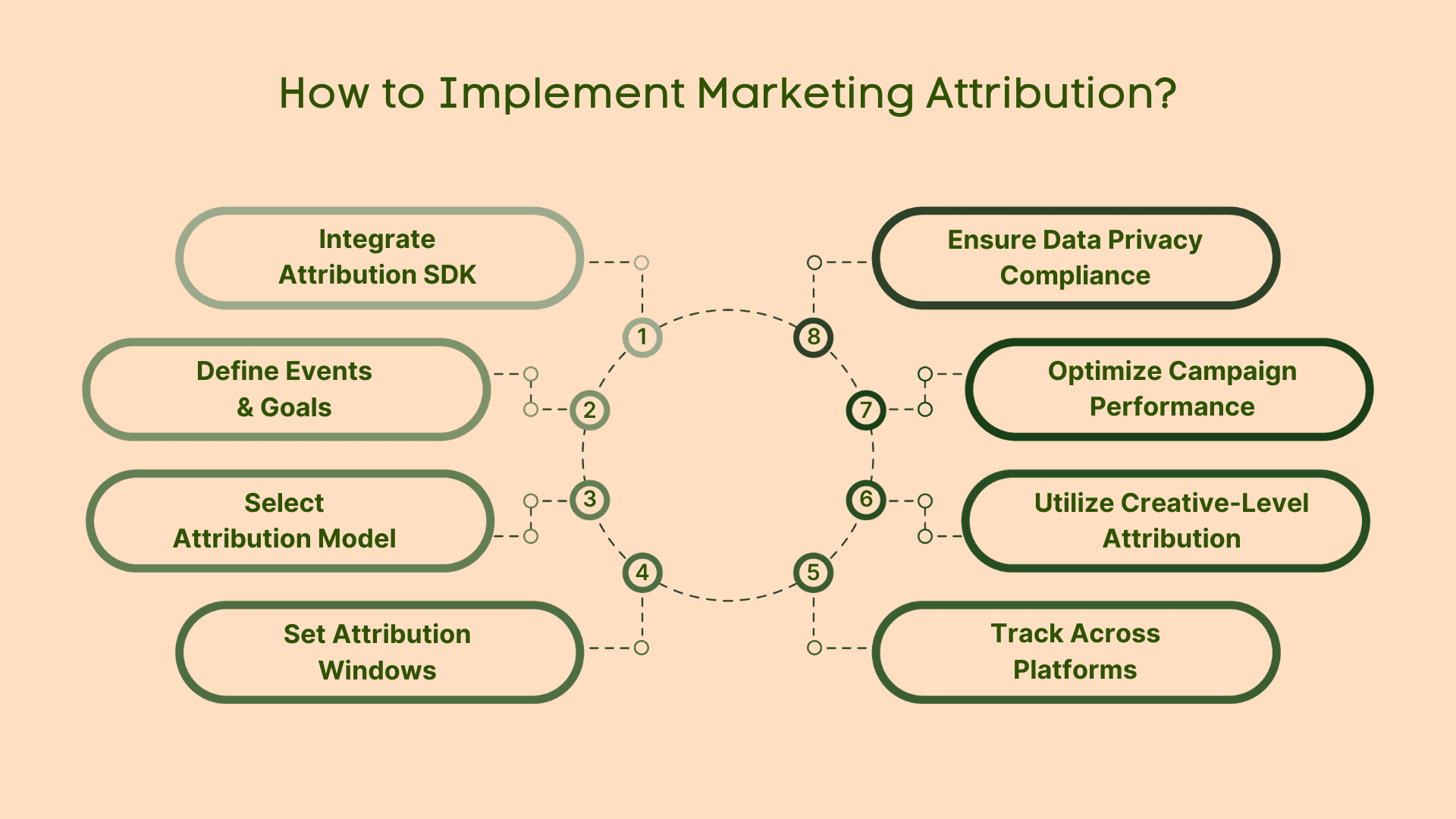
1. Integrate a Mobile Attribution SDK
To track every install and ad interaction accurately, you’ll work with your development team to integrate a Mobile Measurement Partner (MMP) SDK like Adjust or AppsFlyer into your app’s codebase:
Prepare integration settings: In the MMP dashboard, configure your app (e.g., define your bundle ID, platform, and events), then share the SDK configuration details, such as your app token (Adjust) or dev key (AppsFlyer), with your development team.
Add the SDK to your code: The developer adds the SDK as a dependency (e.g., via Gradle for Android or CocoaPods for iOS), requests the necessary permissions, and includes the SDK in your project.
Initialize and start the SDK: It’s essential that the SDK is initialized early, often in the Application class, to ensure install events and subsequent user actions are correctly captured.
2. Define Key Events and Conversion Goals
Decide which player actions matter most for your acquisition goals. Common KPIs include ad clicks, app installations, and first-time app opens. Tag these events in your SDK so you can measure the number of installs you’re getting, as well as which network drives more results. By focusing on concrete conversion goals, you’ll know exactly where to double down and which channels to cut.
3. Choose an Appropriate Attribution Model
Every touchpoint in your campaign tells a story, but you need to decide how to credit each one. First-click attribution gives full credit to the first ad a player saw, while last-click attribution credits the final touch before installation. Multi-touch attribution spreads credit across several exposures. Pick the model that aligns with your acquisition strategy, whether you want to reward early awareness or emphasize final actions, and apply it consistently to compare campaigns on an apples‑to‑apples basis.
4. Set Attribution Windows
Players don’t always install immediately after seeing an ad. Establish a clear time frame, commonly 24 hours for clicks and 7 days for impressions, during which an interaction can claim credit for an install. This window ensures that delayed installs still count toward the right campaign, helping you avoid underreporting or overcrediting any single channel.
5. Implement Cross-Platform Tracking
Your players switch between devices; maybe they saw your ad on the mobile web but installed it on iOS or Android. Enable cross-platform tracking in your MMP to capture every touch, regardless of device. A unified view helps you understand performance across iOS, Android, tablets, and even desktop referrals, ensuring no player journey goes untracked.
6. Utilize Creative-Level Attribution
Not all ads perform equally. Break down installs by creative formats, whether it’s a playable demo, video teaser, or static banner, to see which format resonates with potential players. When you know that a particular video ad delivers higher‑quality installs, you can shift your budget toward that format and pause underperformers.
7. Analyze and Optimize Campaign Performance
Make it a habit to regularly review your attribution dashboard, especially after launching new campaigns or making budget changes. Look for trends like top-performing channels, drops in creative performance, or shifts in player behavior. Use these insights to reallocate your spending and refine targeting so you can continuously improve your cost-per-install and attract more high-quality players.
8. Ensure Compliance with Data Privacy Regulations
Finally, respect player privacy and stay on the right side of regulations, such as GDPR and CCPA. Obtain explicit consent before tracking, anonymize data where possible, and implement secure storage practices. This builds trust with your audience and safeguards your campaigns from costly compliance mistakes down the line.
By systematically implementing these steps, you can establish a robust marketing attribution framework that enhances your mobile game user acquisition strategy.
Once you've set up your attribution model, the next step is understanding the hurdles that can affect its impact.
Common Attribution Challenges
Attribution in mobile game marketing isn't always straightforward. Here are some common challenges that can affect the accuracy of your user acquisition data:
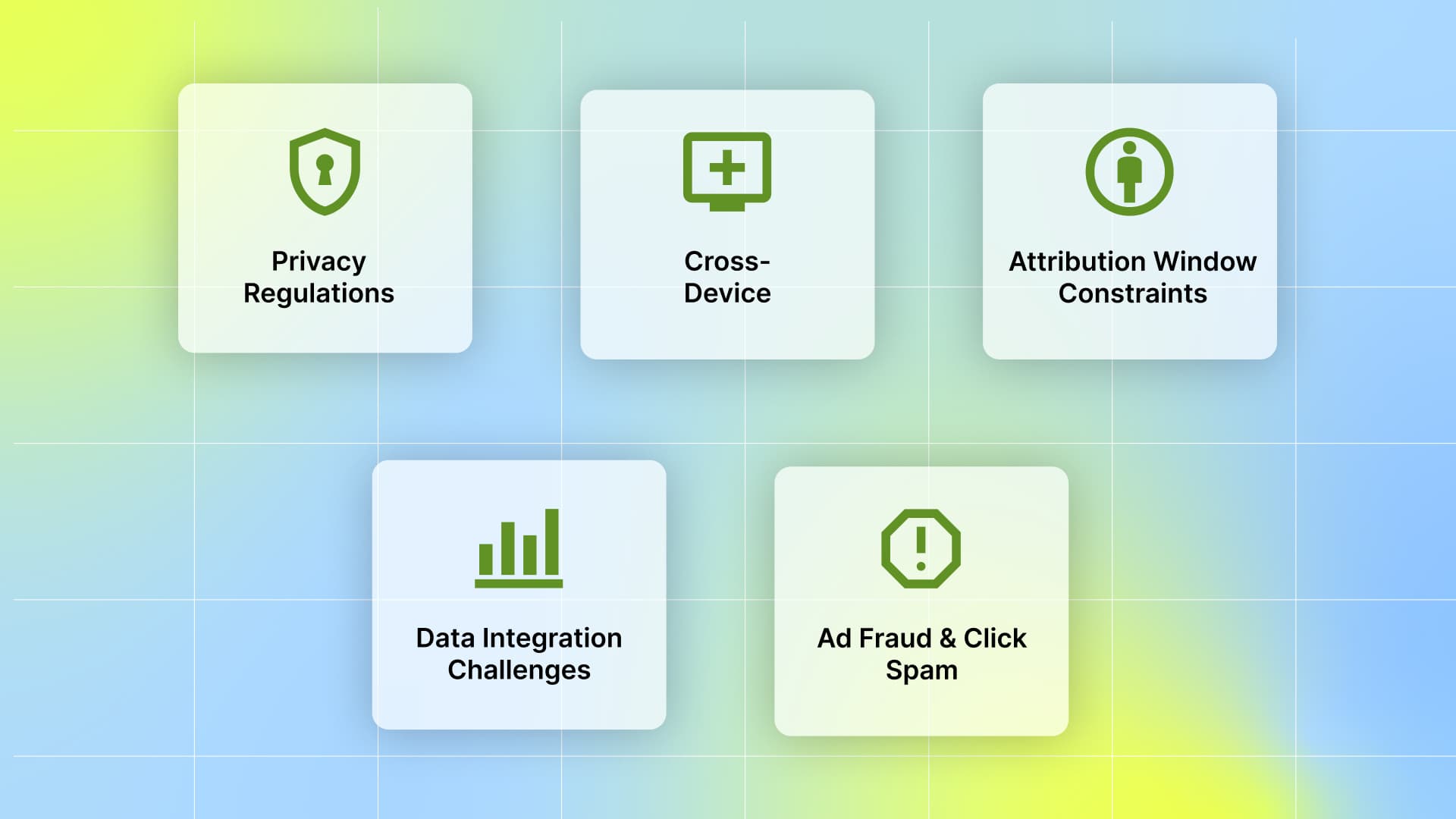
Privacy Regulations & Data Limitations: With Apple’s App Tracking Transparency (ATT) and regulations like GDPR/CCPA, tracking users across apps and sites has become more restrictive. You may miss data on which ad led to an install, making reports less reliable and campaign optimization more difficult.
Cross-Device & Cross-Platform Tracking: Players often encounter your ads on one device, say, a tablet, but install the game on their phone. Without deterministic IDs or sophisticated matching techniques, you can’t connect those touchpoints, losing insights into the whole user journey.
Attribution Window Constraints: If your window is too short (e.g., only 24 hours), you might miss installs that occur after this period. This misassigns credit and misrepresents campaign effectiveness.
Data Integration Challenges: You're pulling data from different ad networks, analytics tools, and your MMP. Each may use different time zones, metrics, and reporting windows, creating inconsistencies and fractured insights unless carefully unified.
Ad Fraud & Click Spam: Fraudsters deploy tactics like click-injection and fake installs. These inflate ad performance metrics and can burn your budget before you even reach legitimate players.
Overcoming these challenges begins with applying the right strategies. Let’s explore some best practices for effective attribution.
Best Practices for Effective Attribution
To scale your mobile game effectively, accurate attribution is a must. Here are some proven practices to help you track and optimize your user acquisition efforts:
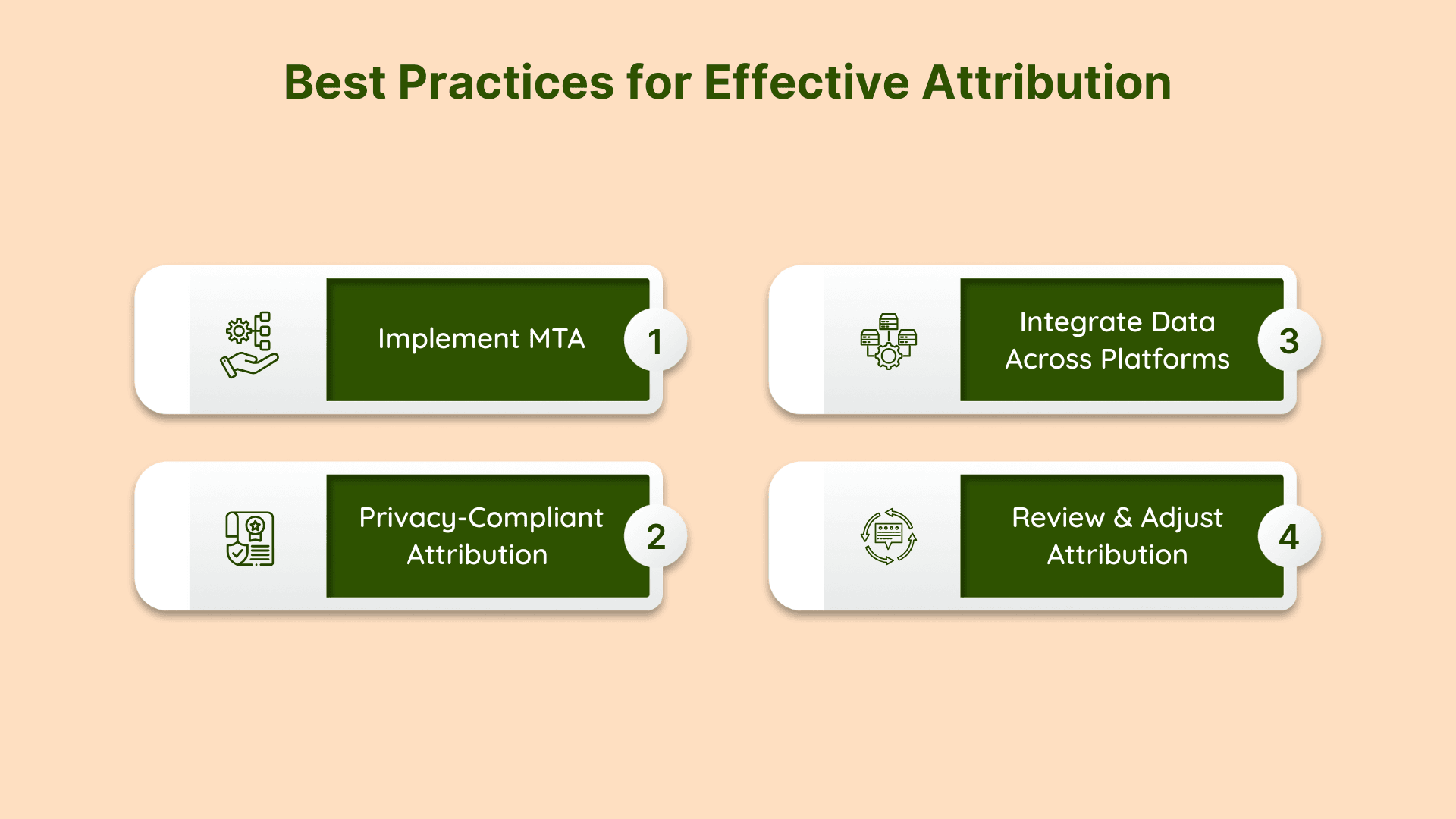
Implement Multi-Touch Attribution (MTA): Don’t just credit the last ad your new player tapped; spread recognition across every interaction. Multi-Touch Attribution lets you assign value to each ad and channel that contributed to the installation.
Utilize Privacy-Compliant Attribution Solutions: Use tools built to meet modern privacy standards, supporting cookieless tracking, server-side event logging, and reliance on first-party data. These methods help you stay compliant with GDPR, CCPA, and Apple’s ATT framework while still capturing meaningful attribution insights.
Integrate Data Across Platforms: Bring together data from your MMP, ad networks, and analytics tools into one unified dashboard. This comprehensive view eliminates fragmented reporting, letting you optimize quickly and confidently using accurate, centralized data.
Regularly Review and Adjust Attribution Models: Player journeys and channel performance evolve constantly. Make it a practice to review your attribution setup regularly, test new models, and reassign credit weightings accordingly. Staying adaptive ensures your acquisition strategy reflects real driver behavior.
Also Read: Best Attribution Tools for Mobile Game Analytics
Conclusion
Understanding marketing attribution transforms your user acquisition from guesswork into data-driven precision. You now know how to track player journeys, identify when and why installs occur, and tailor your investment to models that align with your goals. Whether you prioritize early-stage visibility or focus on high-converting touchpoints, attribution lets you optimize your campaigns for real impact and avoid wasted spend.
While attribution provides valuable insight into touchpoints, Segwise takes it further. Segwise leverages the Creative AI Agent to automatically tag your ad creatives and the Campaign Monitoring Agent to alert you when performance dips. With automated tracking and proactive alerts, Segwise ensures you’re not just aware of issues, you’re acting on them before your budget drains.
So, are you ready to take your UA strategy to the next level? Sign up now for a 14‑day free trial and start acquiring more high-quality players for your game.
FAQs
1. What should I do about ad fraud in acquisition reporting?
Use an attribution partner with built-in fraud protection (like Adjust, AppsFlyer, or Kochava). These tools detect anomalies such as click injection, click spam, or device farms and filter out fraudulent installs to ensure clean data.
2. Can I export raw attribution data for custom analysis?
Yes, top MMPs (like Adjust and AppsFlyer) allow you to export raw, server-to-server event logs. That enables you to run deeper analyses, build custom dashboards, or merge with your internal data warehouse.
3.What role does deep linking play in attribution?
Deep links tag and preserve attribution data across installs, sending players directly to specific game content. This enhances user experience and helps identify which ad variants or creatives drove interest in the game.
Comments
Your comment has been submitted successfully!